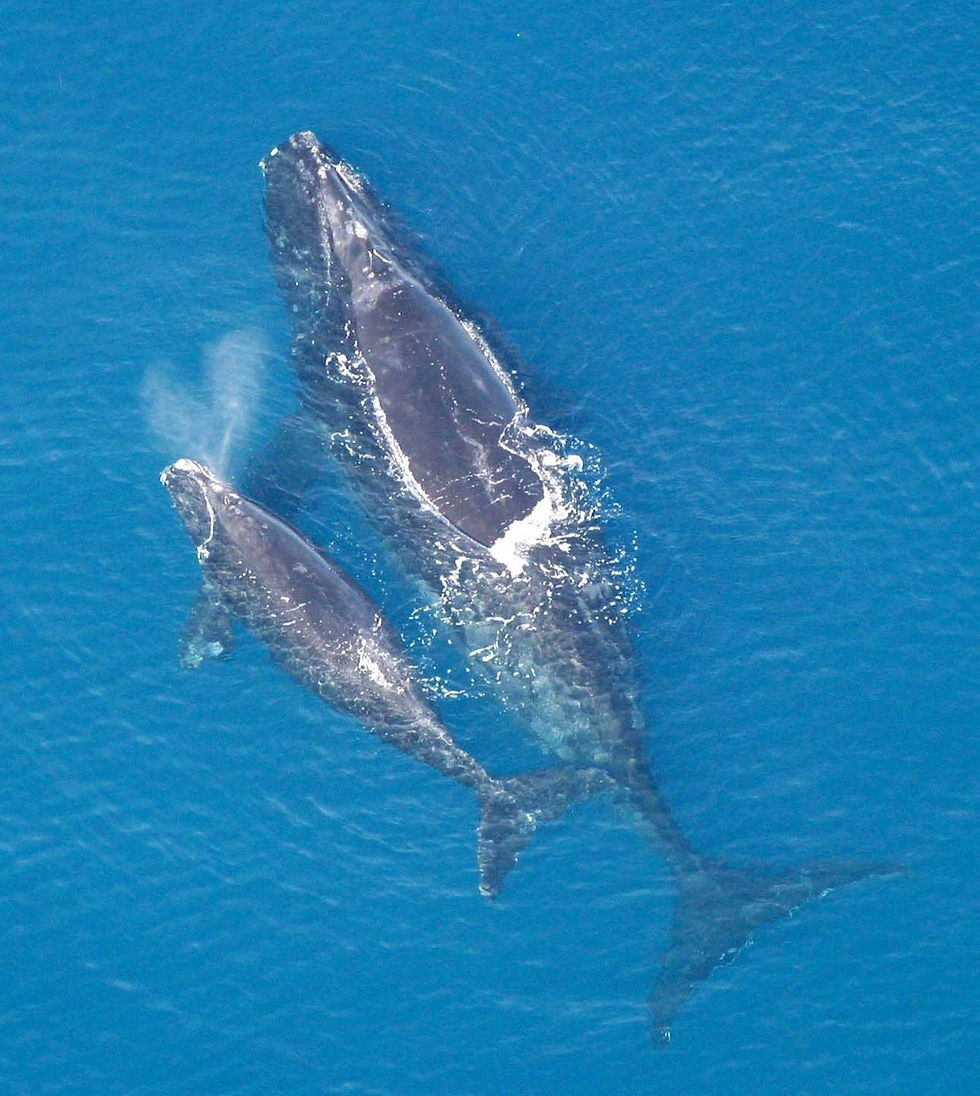North Atlantic Right Whale, - Rare and Gentle Giants
- Anujan Ravichandran
- Jan 12, 2021
- 3 min read
The North Atlantic right whale is perhaps one of the most endangered species of large whale on the planet, and yet many people are unaware of the species’ existence and plight.

North Atlantic right whales are distinct in that they have no dorsal fin and are darkly coloured. Individual whales can also be identified by distinctive rough white patches on their skin called callosities on their head and chin. The whales can weigh up to 30 tonnes (70 tons) and measure up to 17m (52 feet) in length. These right whales, just like other baleen whales, get to these large sizes by feeding on some of the ocean’s smallest creatures; plankton. The whales feed by opening their mouths while swimming slowly through large swarms of miniature zooplankton. They filter these small critters out from the water using their baleen, which trap the plankton. The whales will feed anywhere from the surface to the bottom of water columns.

Right whales will often be seen actively socializing with other whales at the water’s surface, known as surface-active groups or SAGs. The whales will also come to mate in SAGs during any time of the year and in any habitat.
North Atlantic right whales, as their name suggests, live along the coasts of the North Atlantic ocean. The species is split into two populations, one living off the European continental shelf and one living off of North America.

Right whales migrate every fall. In the spring and summer, many of the whales can be found north off the coast of Canada and New England, where they’ll feed and mate. Every fall though, the whales start to head south. Some whales will travel more than 1000 miles from their northern feeding grounds to the shallow, coastal waters of South Carolina, Georgia, and Florida. Females regularly give birth to calves in these southern waters every winter, and in fact, this is the only known calving ground for the species. It is believed that right whales can live to be at least 70 years old, however many whales no longer get the chance to live that long, thanks to man-made threats.
North Atlantic right whales are among the most endangered large whale species on the planet. By the late 1880’s, whalers and hunters had decimated the whale's population, - having killed thousands. Today, only about 350 whales remain. That’s right; 350. Although commercial whaling has long stopped in the Atlantic, the whales continue to face an onslaught of threats to their existence. The leading cause of death for these gentle giants today, is entanglement in fishing gear and collisions with ships and vessels. Over 80% of whales have been entangled in fishing gear at some point in their life. A real scary statistic. Even more worrying, in the Summer of 2017, about 3% of the total population was found dead in the Gulf of the St. Lawrence. Between June 6th and September 15th, 2017, it was reported that 12 right whales had been found dead due to vessel collisions and entanglement. Despite management measures being implemented by the Canadian government and conservationists to minimize the impact of fishing and shipping threats, another 8 right whales died in the summer of 2019.
However, there’s hope for the species. Conservation organizations such as the WWF are working closely together with the Canadian and US governments to further protect the whale’s habitat. As of December 2020, biologists have observed 3 new calves and have hopes for a “robust calving year” for this rare and gentle giant.

Sources





Comments